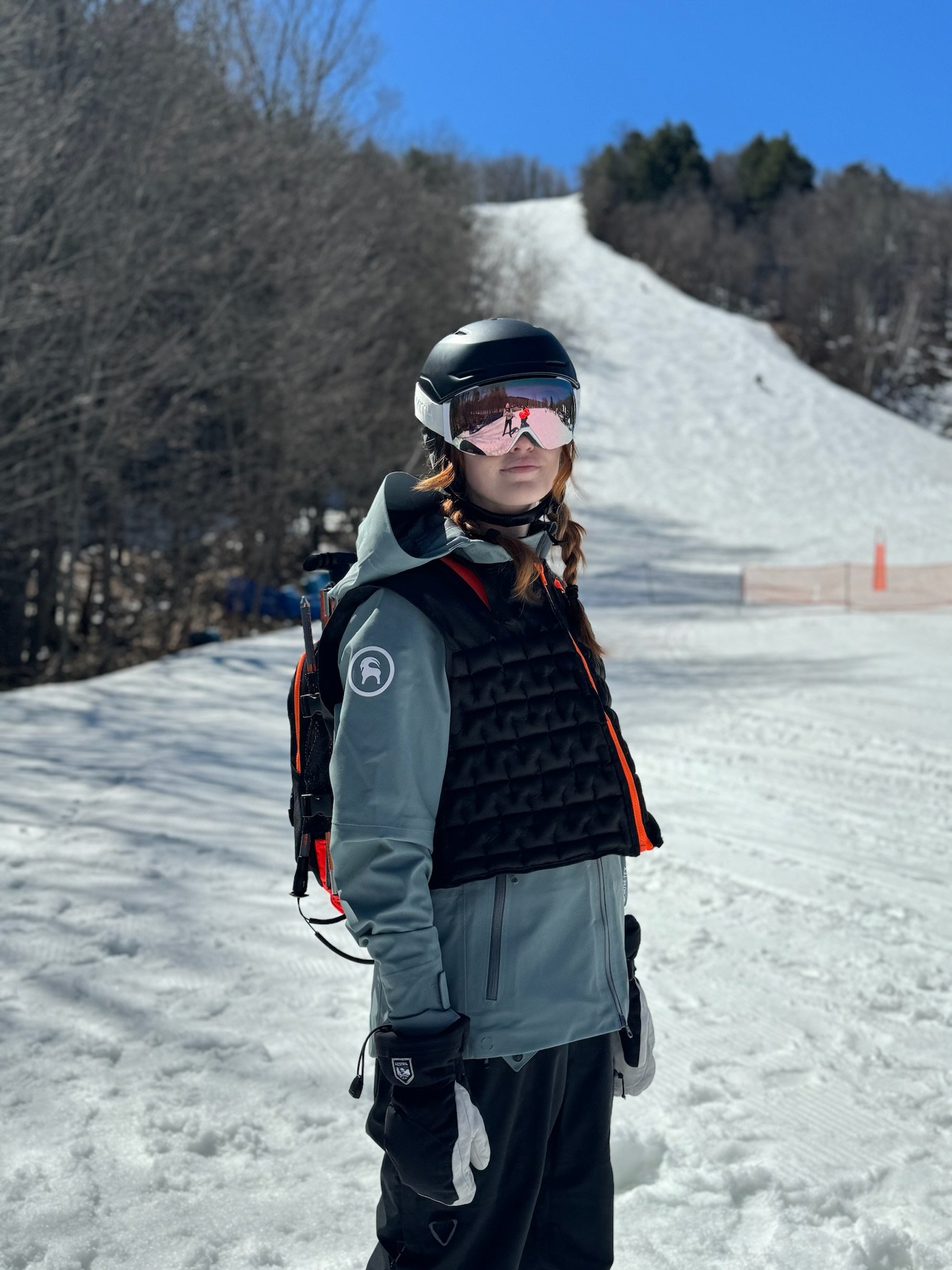Fourth Year Capstone Project | 6 months
PROBLEM
Avalanches pose a dangerous threat to outdoor adventurists when exploring unmarked trails in the backcountry. Two of the biggest dangers from an avalanche burial include chest trauma and lack of oxygen. Chest injuries occur from the weight of compact snow crushing the human body resulting in the lungs collapsing. This weight impairs chest expansion, creating airway obstruction. The combination of this and a limited oxygen supply can be deadly and lead to suffocation.
OPPORTUNITY
In extreme situations when a burial occurs, the current inflatable devices on the market provide no impact protection to the body. This leaves a gap in the market that should be explored to provide a safety device to backcountry explorers that keeps the user afloat during an avalanche, while still providing protection against chest trauma and suffocation.
SOLUTION
A wearable device that provides the user with:
Flotation and increased oxygen supply.
Chest protection without limitation of mobility.
Storage that holds essential equipment with easy and quick access to.
RESEARCH
Current Market
This type of avalanche backpack is typically what you see on the market when it comes to wearable avalanche safety devices. When an avalanche strikes, the user pulls a trigger to inflate the airbag. The purpose of this is to keep the body ‘afloat’ and stay at the top of the avalanche to prevent a burial. However, these airbags are not always effective as they still result in occasional burials. They provide no impact protection to the victim’s body or address the lack of oxygen. Current airbag models are activated by either a compressed air canister of CO2 gas or a fan system stored inside the backpack.
Rules and Regulations
1.0 Avalanche Canada recommends that anybody traveling in the backcountry carry a probe, transceiver, and shovel with them at all times. In addition it is highly recommended that all backcountry skiers and snowboarders complete their AST 1 in order to properly assess backcountry conditions to determine the safest route and avoid dangerous situations.
2.0 The target user group in this market are frequent travellers so International Air Transport Association (IATA) must be considered when designing an inflatable safety device. This includes abiding by regulations on the type of compressed gas used (Division 2.2 - non-flammable, non-poisonous gas), triggering mechanisms, and pressure relief valves).
CONCEPT IDEATION
After conducting research and analyzing different types of inflation technology, materials, and airbag orientation, I proceeded with sketching and creating low-fidelity prototypes to explore concepts.
Findings from this Stage:
Battery powered fans are reusable and can provide the user oxygen but are heavier in weight.
C02 canisters have quicker activation and take up less room but are one-time use with flight restrictions.
Body needs protection around head, neck, and chest when avalanche strikes, but can’t limit mobility when not activated.
Vest should fit comfortably over jacket and seamlessly blends into skier/snowboarder style.
PRELIMINARY DESIGN
DEFLATED
INFLATED
When a skier or snowboarder detects an avalanche, they pull the trigger handle to activate the inflatable safety device. The device is separated into two inflation systems:
System 1
System 2
System 1: A fan-based system that’s powered by super capacitors. The device takes air from its surroundings and feeds it into the airbag. After 3 minutes, the airbag will deflate, providing additional oxygen to the buried victim.
System 2: A CO2 compressed air canister that also activates when the trigger is pulled, inflating small welded pockets around the torso. Unlike the fan-based system, this part of the vest stays inflated to protect the body from blunt-force impact.
The vest inflates small air pockets with C02 and provides additional protection to the body against blunt-force trauma. This provides an alternative to a skeletal structure or padding, without the added discomfort, weight, or restricted mobility.
A backpack is attached to the vest that holds essential avalanche equipment that is recommended by Avalanche Canada.
The main focus of this stage was to build prototypes in order to further develop the AvyPRO design. This was pivotal in my design process because prototyping allowed me to gather valuable user feedback through usability testing and observation. By putting prototypes in the hands of users, I was able to identify how well the product meets user needs, identify usability issues, and understand user preferences and behavior.
DEFINITIVE DESIGN
Storyboard
Handle
Development
Chest Protection
The technology I explored during this prototyping phase for the vest/chest protector is called ‘air shock technology’. This technology uses heat welded fabric to provide protection against blunt force trauma. It works by heat sealing multiple pockets so when the body takes an impact, that force is transferred and dampened to its surrounding pockets, dispersing the impact around the body in the process.
This technology does not limit the mobility of skiers or snowboarders because the inflation activates when the trigger is pulled. CO2 then fills the air pockets. This vest would come in multiple sizes but still allow for minimal tightening of the device to fit close to the body.
Head & Neck Protection
This design limits the user’s neck mobility to reduce strain and injury while also providing them with a flotation device and protective impact barrier.
Backpack Design
An important design feature that was tested for the backpack is that it should provide easy access to avalanche equipment in the event of an emergency situation. I had participants wear the vest and attempt to reach for the equipment to understand range of mobility and comfort.






































